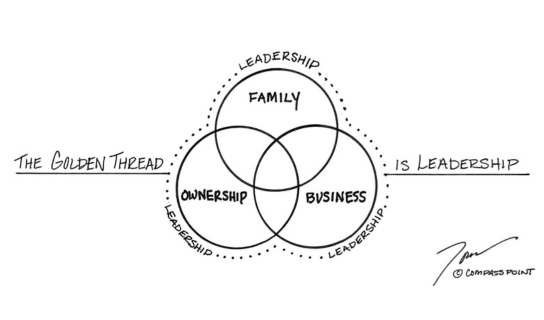PEOPLE / TALENT
Why are your people thinking about leaving?

Recently we have heard a lot about the Great Resignation. Many of you have even experienced it. The numbers tell a shocking story, specifically an unexpected piece of data.
According to the US Labor Department, 68.9 million people left the workforce in 2021.
Out of the 68.9 million, 47.4 million were voluntary quits.
That’s over 68%!
What has prompted this mass exodus?
Most agree that a major factor is people that have reassessed their priorities during the pandemic. This event created an increase in levels of stress, unprecedented burnout and caused a direct impact on mental health. It also showed them there were alternative ways of working that frankly were not on the table prior to COVID.
This has not only been an American event, but a global one with Germany, Japan, and other wealthy nations seeing similar trends of the exodus as the United States.
My question is whether the pandemic is the reason OR was it “the straw that broke the camel’s back”?
It is hard to know but an interesting study from the Max Planck Institute for Social Anthropology in Germany indicates that the great resignation is more about how the economy has become overheated and unsustainable, both in an environmental sense and in a mental sense and the pandemic was just the trigger of people saying enough. I think that this is a plausible theory.
This massive move in the job market has created heightened competition for talent. Employers are facing new challenges in attracting and retaining the right people. The cascading effect has resulted in record wage gains and other attractive terms putting those who are looking for better opportunities in the driver’s seat.
Another interesting dynamic is at work. Research has documented that we can catch each other’s emotions, a phenomenon is known as “emotional contagion”, even at work. When a coworker leaves to pursue other opportunities, it can spread to the rest of the workforce. That is, when one person leaves your team, it increases the likelihood that others will do the same.
What can you, as a company leader, do to slow or reverse this trend?
Here are some ideas we have seen work with our clients:
Create certainty for your team wherever you can. The uncertainty about the end of the pandemic, the changes in work arrangements and shifts in the business and the world landscape produce a threat state in our minds. Your team is looking for clarity. Talk about what you do know. That you value them and their contributions. Talk about the strategic direction you and the leadership team are working on and everyone’s commitment to it.
Talk but also listen. Check-in with your team to understand what is on their plates. Maybe you need to help them re-assess priorities and/or rebalance the work amongst the team members. Invite them to identify issues. Allow them to push back and say no. People are more engaged when they have a say in problem-solving. Active listening creates trust, improves communications, and uncovers new insights.
Create connection. Addressing the big challenges together leads to feeling that team has each other’s back. This boosts morale, creates camaraderie, and builds long-term relationships among team members. Work friendships increase both productivity and engagement. Connect with your people on a personal level. Employees thrive when managers acknowledge their personal commitments and make accommodations where possible.
Allow autonomy and flexibility. A recent study found that the adoption of flexible work arrangements (e.g., the possibility of remote work) raises the number of employees defined as high performing by 40%. In many cases, flexibility is more important to employees than salary or other benefits. What is behind flexibility is autonomy. Along with certainty, autonomy is one of the five key drivers of threat and reward in the brain. Autonomy means having the ability to be the primary decision-maker of where and when they do their work. Allow for autonomy and flexibility wherever you can.
While you can’t control everything, focus on what you can. Talk to your people, ask questions, actively listen, problem solve together, strengthen team connections, and trust your people to help create the company’s future.
Do you have questions about retaining people? Grab a 30-minute slot on my calendar. I’m here to help keep and grow your team.
You may also like…

BLOG | LEADERSHIP
The Multiplier That Makes Businesses Grow
If your leadership team isn’t strong, aligned, and equipped with the right tools, how can they bring your strategy to life? The short answer: they can’t. But the good news? You can change that with this critical ingredient.
Read More
BLOG | LEADERSHIP
The Golden Thread that Binds Family, Business, and Ownership
The most successful family businesses don’t leave leadership development to chance. They recognize that leadership isn’t just about a single person at the top – it’s about building a system that supports leadership at every level – and through each of the 3 domains of a family business. It truly IS the golden thread that binds.
Read More
BLOG | TRANSITION / SUCCESSION
From Empires to Enterprises: Succession strategies that make or break legacies
History provides us the benefit of hindsight and powerful lessons. Take Genghis Khan and Alexander the Great, both great conquerors. Yet one implemented a structured succession plan that ensured the survival and expansion of his empire, while the other's failure to do so led to the disintegration of his vast holdings shortly after his death. A strong succession planning is the ultimate competitive advantage.
Read MoreWhere Family Businesses Come to Grow & Learn
At Compass Point, we make it easy to get insights, training, tools, and articles straight to your inbox and help family business owners and their team continue to grow, learn, and lead.


